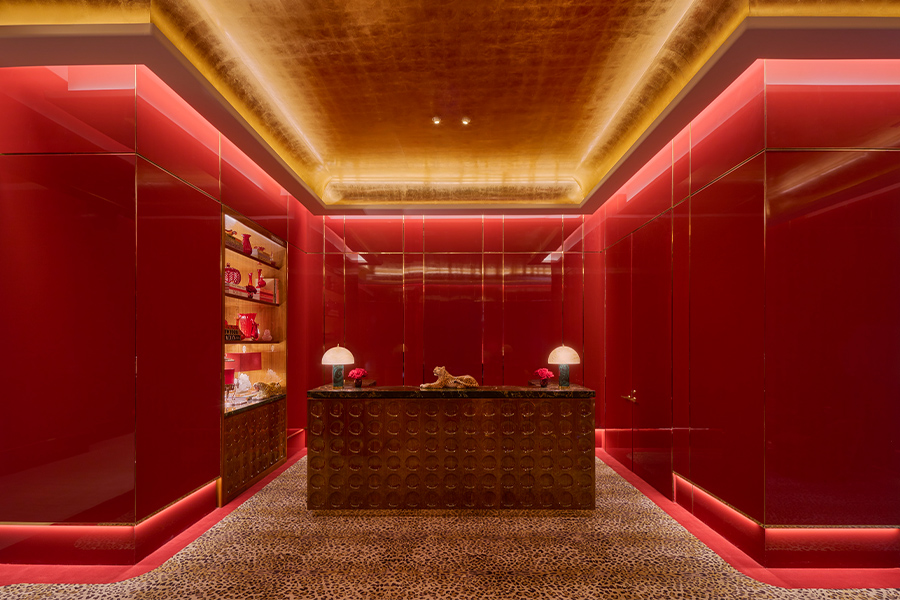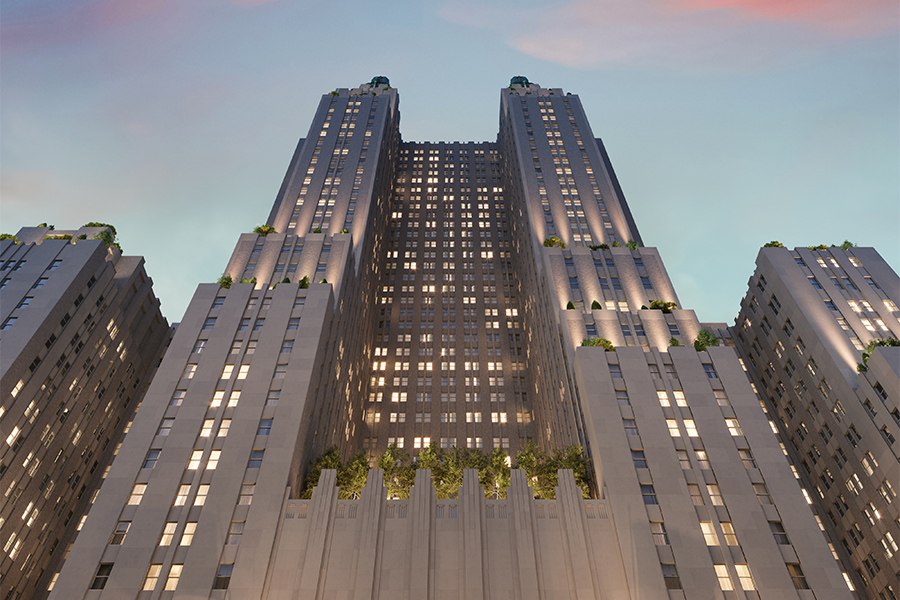Paying homage to the local flora and fauna, and combining the brand’s signature approach to sustainable luxury, 1 Hotel Haitang Bay is the first Chinese resort from 1 Hotels. Housed within a dramatic building by Hong Kong-based Oval Partnership, with nature-informed interiors from Singapore design studio FARM, the 294-room property is firmly rooted in its context, encapsulating the biodiversity of Hainan island, an accessible location from the Chinese mainland.
Perching the hotel up on a hill, the firms took advantage of the strategic location, designing the building to receive generous natural lighting and cross ventilation while opening up views to the ocean. Planning around a series of gardens, the design teams also integrated vegetation into the fabric of the structure itself via staggered roof terraces and green walls. Where interior greenery was not feasible, the physical design elements take inspiration from the forms of plants and trees.
“At 1 Hotel Haitang Bay, we have the luxury of space that we don’t often find in our urban settings,” explains Tony Machado, senior vice president of design for SH Hotels & Resorts, which operates 1 Hotels. “This allowed us to expand on our sustainable platform to incorporate features such as a solar farm and an expansive working organic farm for a true farm-to-table experience.”
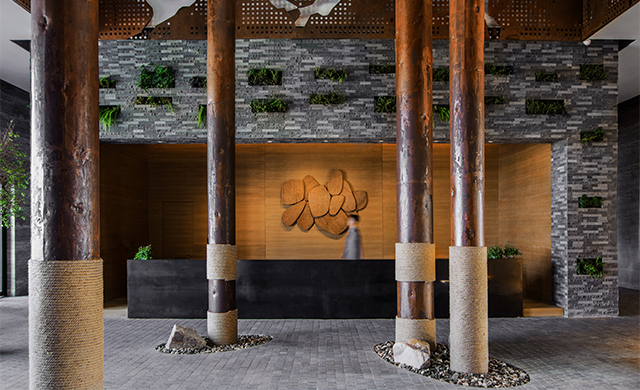
In the lobby’s reception area, “tree trunks” crafted from timber and weathered steel are set underneath a screened skylight
With an emphasis on locally available resources, warm timber and lava stone celebrate the beauty of natural materials. “We designed the hotel to allow the guests to appreciate the tactility, age, and character of the materials, and in doing so understand the ethos of the brand,” says Peter Sim, director of FARM.
To promote a sense of wellbeing, the biophilic design language consistently weaves throughout the spaces. In the lobby, tall weathered steel and timber “tree trunks” with a screened skylight filter light into the space below and transport guests to the tropical forested hills. Raw, textured, and pigmented concrete, local volcanic stone, and salvaged stacked Chinese roof tiles suggest the sheer rock escarpments of Hainan’s mountains.
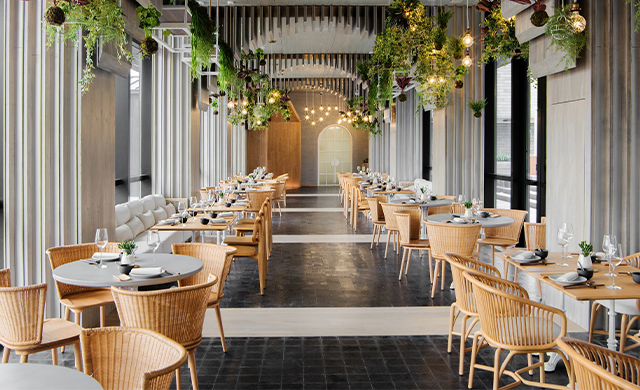
A bevy of plants brighten the Chinese restaurant Green House
This deliberate abstraction of nature extends to the restaurants and bars, where FARM combined an assortment of unpolished materials to evoke the imagery of the silica beaches, sun-bleached driftwood, and sleepy seaside villages. At 1 Kitchen, a rammed earth wall references the island’s dramatic rocky coastline. Smaller spaces take cues from agrarian and quotidian structures like garden sheds, greenhouses, and traditional timber inns.
“Where possible, we used only natural, local, or recycled materials, and often in their raw, unprocessed form,” says Sim. “Where manufactured materials such as concrete and steel were used, we intentionally left them untreated so that they too would show the beauty and texture of their imperfections.” By marrying eco-conscious architecture and nature-inspired interiors, 1 Hotel Haitang Bay achieves its goal, Machado points out. “We wanted to create a destination where guests could check in and completely unplug.”
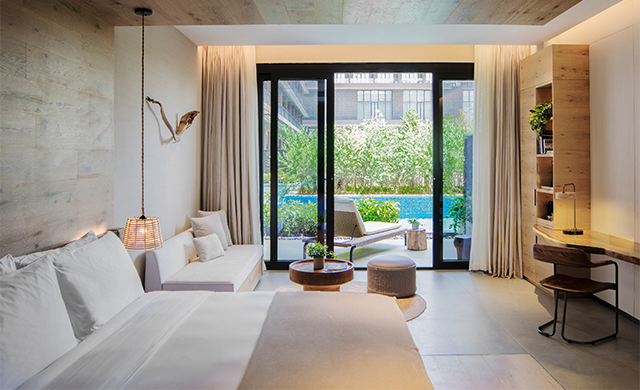
Live-edged timber and unpolished stone are on display in a Lagoon guestroom
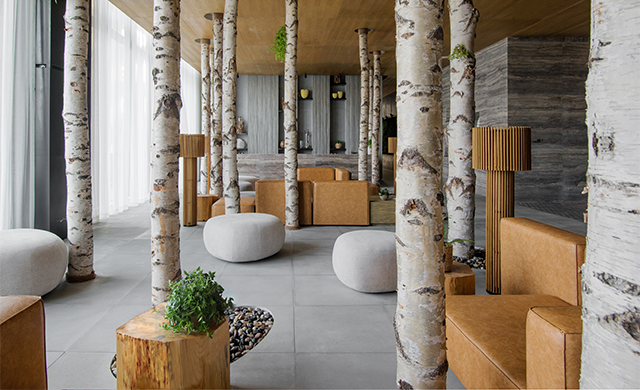
Local and biophilic elements greet guests in the group check-in area
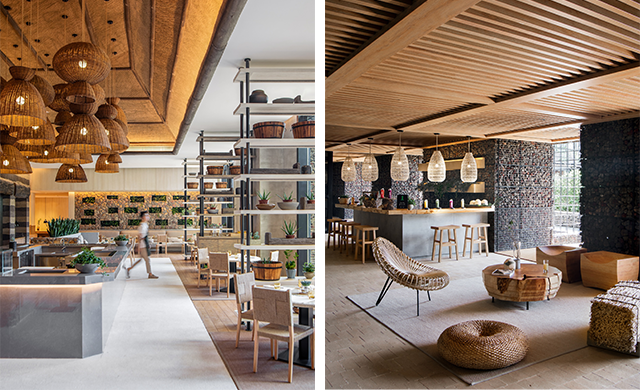
At 1 Kitchen, unpolished materials mix with an abundance of greenery to create dramatic features like a rammed earth wall; Juice Bar features textured walls and ethereal pendants
This article originally appeared in HD’s December 2020 issue.


